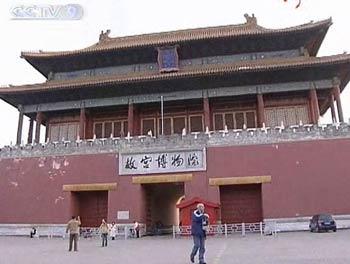Source: CCTV.com
09-03-2008 10:13
To experience any culture, one needs to examine its past, to gaze at the relics of its history. The history of Beijing travels back over three thousand years. It became the capital of the land called the Middle Kingdom a thousand years ago. All that history is well preserved in numerous museums dotted around the city. Some of those museums are atypical, even a little eccentric, with enough fascinating relics to appeal to those who typically steer clear of museums. Today, Ji Xiaojun takes a peripatetic journey through some of Beijing's profusion of museums.
 |
| The history of Beijing travels back over three thousand years. It became the capital of the land called the Middle Kingdom a thousand years ago. All that history is well preserved in numerous museums dotted around the city. |
Walking along Beijing's main street, Chang'an Avenue, westward from the Forbidden City, it's easy to spot the China Millennium Monument. The monument, as is apparent, was built to celebrate the new millennium. Below the finial architecture lies a full spectrum of culture and art. Here one finds the World Art Museum.
The intensity of watching sporting events may have set your heart racing. You're probably drenched under the scorching rays of the sun. You can cool off here. This is a sedate retreat from the clamor of the arena. It's a place that can inspire. It can teach about the past. And its a place to discover the common heritage of Humanity.
Art lovers have a rare encounter with some of History's great civilizations. Masterpieces from six ancient kingdoms are here, all in one place.
The exhibition is called "Great Civilizations." It brings together 300 works of art. Their vintage extends from the 18th century all that way back to 3,000 B.C. One gazes upon the genius of six ancient civilizations: Egypt, Mesopotamia, India, Greece, Rome and Meso-America.
To discover historic China, the Palace Museum,also known as the Forbidden City, in the heart of Beijing is the place go.
The Forbidden City was the seat of supreme power for over five centuries. It's acknowledged globally as one of the greatest architectural complexes and historical masterpieces of all time. There is priceless testimony to the greatness of Chinese civilization during the Ming and Qing dynasties.
The former imperial domain is a treasure trove containing house thousands of precious relics. There is art, works of calligraphy. There are artifacts of porcelain, stone, jade, and bronze. There are paintings and carvings of ivory, bamboo and wood.
The Capital Museum houses 250,000 artifacts and archival photographs. Most of the relics were unearthed in the Beijing environs. The place, taken as a whole, is a document, chronicling life in Old Beijing. The museum is situated on Chang’an Avenue in the heart of the city. You can recognize it from a distance by the rectangular roof extending over the structure like a mortarboard head piece. This museum boasts the most sophisticated facilities of any Chinese museum.
Grand View Garden replicates scenes from the foremost Chinese novel, Cao Xueqin's "A Dream of Red Mansions." The story was written during the Qing Dynasty. The garden was designed and built during the 1980's, for a television series based on the novel. Today this former "studi set" is the site of the Red Mansion Museum of Culture and Art. It's a place for a quiet getaway and a peaceful stroll, enjoying images from the classic novel. The garden also hosts cultural events, celebrating ancient rituals during important Chinese festivals.
The Beijing Folk Museum was built to celebrate the folklore and old customs of Beijing. It's at Dongyue Temple, the largest Taoist Temple in North China. Since it opened to the public in 1999, the museum has mounted exhibitions focusing on distinctive folk styles. It is popular with people who live in Beijing. And the cultural events at festive times are especially attractive for foreign visitors.
